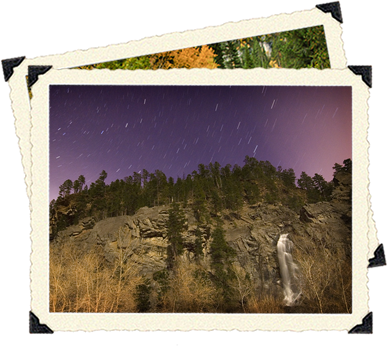 The Nation’s Last Frontier: The Nation’s Last Frontier:
Known as the “Nation’s Last Frontier”, the Black Hills saw the convergence between nomadic and agrarian cultures in 1876, late in the history of America’s western migration to the Pacific. Like with “49ers” to California, the “59ers” to Colorado, and the "62ers" to Montana, the Black Hills gained prominence with the confirmation of gold by the Colonel George Armstrong Custer Expedition of 1874. By 1876 and the unsuccessful effort to keep the gold-seekers out, the “rush” was on to the “76ers” of South Dakota.
Spearfish Canyon was prominent in this development. First were the trappers to this impassable gorge, then the timber and the railroad and the hydro-electric system that opened the canyon, and finally, today’s scenic Highway 14A roadway. As the antiquated infrastructures that fostered frontier development are abandoned, decay and vanish, recreation has become the dominant public interest.
Notables:
The canyon is rich in culture with the many notable footprints in the landscape. Trapper Hugh Glass, Lakota religious leader Black Elk, conservationist John Muir, bullwhacker Calamity Jane, President Teddy Roosevelt, George Belshaw and the Latchstring Inn, the Burlington Railroad, gold miner Potato Creek Johnny, and renowned organic architect Frank Lloyd Wright. |


